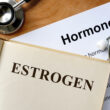In 1992, the British Medical Journal published a disturbing study which suggested that human semen quality had declined by approximately 50% from 1930 to 1991 (1). Subsequent research has confirmed that male fertility seems to be declining—and a whole host of man-made chemicals appears to be a possible cause.
These chemicals, known as endocrine disruptors or endocrine-disrupting chemicals (EDCs), are used in plastic, food packaging, pesticides, cosmetics, cleaning products, paint, toys, personal care products, and household products. The amount of these chemicals produced annually around the globe is measured in the millions of tons!
Many of these man-made chemicals affect our endocrine system by interfering with our hormones’ normal functions, directly affecting our reproductive functioning.
We’ve discussed endocrine disruptors before and this time we’re focusing specifically on how they affect males and their fertility. We’ll also look at ways to reduce exposure to endocrine-disrupting chemicals, and how protect the men in our lives.
It’s important to note that these chemicals seem to have the most significant impact on babies and children as their bodies are developing, which is all the more reason for women who are looking to get pregnant anytime soon to limit their exposure to EDCs—including hormonal contraception—as much as possible.
Androgens are key for healthy male development
A category of hormones called androgens are essential for the development of the male reproductive system. Androgens—testosterone being the most well known—are usually thought of as the male reproductive hormones, though smaller amounts are necessary in women’s bodies as well. The masculinization of a boy’s internal and external male reproductive organs are dependent mostly on testosterone and one of its metabolites, dihydrotestosterone (DHT), which are produced in the testicles. Thus, normal male development requires a balanced hormonal environment.
The period of time when the male reproductive system is developing is incredibly sensitive to chemicals that have an anti-androgen effect. At about eight weeks gestation, the cells of the forming testes begin to produce testosterone, which drives the differentiation and development of the internal and external genitalia. The ability of endocrine-disrupting chemicals to suppress androgen synthesis during fetal and neonatal life can cause a series of male reproductive disturbances, such as cryptorchidism (the failure of one or both testicles to descend into the scrotal sac), hypospadias (a condition in which the opening of the urethra is somewhere other than at the tip of the penis), impaired fertility (especially due to poor semen quality), and an elevated incidence of testicular cancer. (2, 3, 4, 5) The abnormal development of testes in an infant boy can have long-term consequences for sperm production, and therefore his future ability to conceive children.
The perinatal period is a particularly sensitive window of development in which minor hormonal disturbances may have a long-lasting impact on fertility.
Other less talked about effects of endocrine-disrupting chemicals include alterations of genetic systems and gene expression. These effects are particularly troubling since alterations in genetic programming during early stages of development can have profound effects years later and may also lead to transgenerational inheritance of disease. (6,7)
Worst endocrine disruptors for males
Bisphenol A
BPA is an endocrine-disrupting chemical used in the manufacturing of plastics and epoxy resins used in food and drink containers, plastic water bottles, baby bottles, dental sealants, and a variety of household products. It is widespread in the environment and every year 2.2–4.7 million tons of BPA are released into the environment. Humans are mainly exposed to BPA as it leaches from the inner lining of canned food and microwave containers during heating of food or through beverages in plastic bottles. BPA can be detected in several human body samples, such as serum, urine, amniotic fluid of pregnant women, breast milk, and even in semen. It has been estimated that urinary BPA is detected in more than 90% of Americans. Several studies have shown that increased urine BPA levels may be associated with decreased sperm concentrations and decreased semen quality. (8)
Alkylphenols
Alkylphenols are used industrially in the production of detergents, latex paint, adhesives, and plastics as the stabilizers to package food, detergents, disinfectants, surface cleaners, cosmetic products, herbicides, and pesticides. Unlike most chemicals, which usually become less toxic with biodegradation, alkylphenols become more toxic when they break down. Humans are primarily exposed to alkylphenols through contaminated food and water. Alkylphenols have been shown to affect testicular development and testosterone production.
Phthalates
Phthalates are industrial chemicals used as plasticizers in the manufacture of plastics, solvents, sealants, paints, varnishes, detergents, cosmetics, personal care products, toys, and household products.
Phthalates easily leach from plastics into foods, beverages and body fluids. Factors such as product age, use, and ultraviolet light exposure cause phthalates to leach even more. Humans can be exposed to them through ingestion, absorption, inhalation, and skin contact. Around 6 million tons of phthalates are produced worldwide every year.
Phthalates are considered to be one of the major groups of anti-androgenic substances causing disorders of male reproductive development, such as hypospadias, cryptorchidism, smaller testes and penis size, alterations of the vas deferens and epididymis, poor sperm production, testicular germ cell tumors and reduced semen quality. In humans, maternal exposure to phthalates also results in fetal exposure to these toxins.
Start by filtering what you bring into your home
Avoiding every product with these chemicals may seem daunting, but you can dramatically reduce your family’s exposure by making one small change at a time. You have a lot of control over what you bring into your home, so begin making some simple swaps when it comes to what you put in and on your body.
Pregnant and breastfeeding women, or any woman planning to conceive, should take extra care to avoid endocrine disrupting-chemicals for the future hormonal health of their offspring.
Avoid endocrine disruptors in your food:
- Thoroughly wash fruits and vegetables before consuming them,
- Replace food storage containers with glass, especially when storing hot food or drinks.
- Find reusable glass or stainless steel drink containers and metal straws for your coffee, tea, and water.
- Reduce consumption of canned and processed foods (or at least check the label that items are in BPA free packaging).
- Never microwave food in plastic containers.
- Avoid plastic containers designated #3, #6, and #7.
- Prepare more meals at home and try to use fresh ingredients.
- Consider using a water filter (we know that women on the synthetic estrogens found in hormonal contraception excrete it through their urine, where it ultimately ends up in our water supply).
- If possible, purchase organic produce, meat, and dairy products.
- Replace older, non-stick pans with newer, ceramic-coated pans.
Avoid endocrine disruptors in your body products:
- Each time you need to buy a new bottle of something, look for a new natural brand to try.
- Avoid anything that has “fragrance” or “parfum” in the ingredient list.
- Use washing balls (Google “washing balls” or “laundry balls”).
- Do not use fabric softener—use wool dryer balls instead.
- Use the apps ThinkDirty or SkinSafe to see how safe your products are.
Though endocrine-disrupting chemicals can seem unavoidable, the good news is that their dangers are becoming more well-known and many companies are voluntarily offering safer product options. If you begin to read labels, you’ll find lots of packages that say “BPA free” or “No phthalates.”
It has taken me years to make healthy product swaps, and some of the easiest changes I’ve made to avoid the extra chemicals for my family is to replace all our food and drink containers with glass or stainless steel. I also steer away from using canned food. Whenever we run out of a lotion, soap or detergent, I look for a healthier product to replace it. Yes, these products can be pricey, but there have been many products I’ve found we don’t really need, like dryer sheets. The extra time and money it has taken to make these changes is well worth the peace of mind knowing my husband, children (and especially my two boys) have healthy bodies and healthy hormones.
References:
- Carlsen E., Giwercman A., Keiding N. and Skakkebaek N.E. 1992 Evidence for decreasing quality of semen during past 50 years. British Medical Journal 305 609–613.
- McLachlan, J. A., Newbold, R. R., and Bullock, B. (1975). Reproductive tract lesions in male mice exposed prenatally to diethylstilbestrol. Science 190, 991–992. doi: 10.1126/science.242076
- Gill, W. B., Schumacher, G. F., Bibbo, M., Straus, F. H. II, and Schoenberg, H. W. (1979). Association of diethylstilbestrol exposure in utero with cryptorchidism, testicular hypoplasia and semen abnormalities. J. Urol. 122, 36–39.
- Jensen, T. K., Toppari, J., Keiding, N., and Skakkebaek, N. E. (1995). Do environmental estrogens contribute to the decline in male reproductive health? Clin. Chem. 41, 1896–1901.
- Zhang, L., Dong, L., Ding, S., Qiao, P., Wang, C., Zhang, M., et al. (2014). Effects of n-butylparaben on steroidogenesis and spermatogenesis through changed E2 levels in male rat offspring. Environ. Toxicol. Pharmacol. 37, 705–717. doi: 10.1016/j.etap.2014.01.016
- Schug, T. T., Janesick, A., Blumberg, B., and Heindel, J. J. (2011). Endocrine disrupting chemicals and disease susceptibility. J. Steroid Bichem. 127, 204–215. doi: 10.1016/j.jsbmb.2011.08.007
- Skinner, M. K. (2011). Role of epigenetics in developmental biology and transgenerational inheritance. Birth Defects Res. C Embryo Today 93, 51–55. doi: 10.1002/bdrc.20199
- Li, D. K., Zhou, Z., Miao, M., He, Y., Wang, J., Ferber, J., et al. (2011). Urine bisphenol-A (BPA) level in relation to semen quality. Fertil. Steril. 95, 625–630. doi: 10.1016/j.fertnstert.2010.09.026
Additional Reading
Why Is Male Reproductive Health Declining?
Male Sex Hormones Are a Big Deal, Too
Pill chemicals in waste water cause endemic feminization of male fish
Why We Really Need Better Options for Treating Male Infertility
Simple Ways to Protect Your Health and Fertility from Endocrine Disruptors







